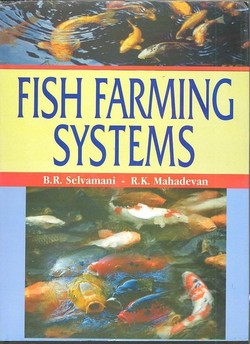
By
B. R. Selvamani & R. K. Mahadevan
Preface
Integrated fish farming is a sustainable-agriculture technology practised widely across the world. It is a diversified and coordinated way of farming or producing agricultural items in the fish farms with fish as the main product. The items produced are to be used either as source of feeds and fertilizer, source of additional income or both. The wise integration of these items in a fish farm promotes the full utilisation of its land area and recycling of wastes and by-products, minimises the operation expenses in feeds and fertilizer, improves the living conditions of the workers due to the increases of income and maintains a balanced ecosystem.
Integrated fish farming systems typically involve a combination of fish polyculture, integration of agricultural production (livestock and / or crops) with aquaculture, and on-farm waste recycling. It can deeply improve already existing farming systems. For example, it can increase the water availability to other cultures or it can increase the farm income when livestock is associated or when cultures are conducted in the pond itself. On the other side, this type of fish farming can also benefit from agricultural by-products generated by other activities, as they can be used to increase the quantity of plankton that is the natural food of fish. But in return, the management of such an integrated fish farm is complex and implies to respect some standards.
This book provides a through and detailed interdisciplinary coverage of integrated fish farming systems. It places integrated fish farming in a global context, reporting on case studies of successful integrated fish farming operations, experiments to enhance the farming performance, research on farm waste use and pond ecology, socioeconomic elements of fish farming extension and adoption, and the biotechnical and economic aspects of adapting integrated fish farming to reservoirs, marshlands, rice paddies and marginal habitats. This book is designed for farmers, extension workers, decision-makers, students and researchers concerned with integrated aquaculture. It will make a significant contribution to the practice of integrated fish farming in developing countries all over the world for many years to come.
Contents
- Integrated Fish Farming
- Integrated Fish Farm Planning
- Integrated Fish Farm: Design and Construction
- Models of Integrated Fish Farming
- Rice-Fish Farming Systems
- Animal-Fish Farming Systems
- Grass-Fish Farming Systems
- Integrated Carp Farming
- Pond Fertilisation
- Livestock Rearing and Crop Production
- Prevention of Fish Diseases
- Integrated Agri-Aquaculture Systems
- Socio-Economic Impacts of Integrated Fish Farming



ساحة النقاش